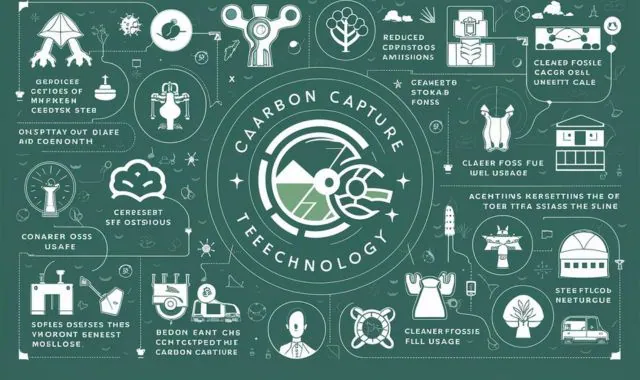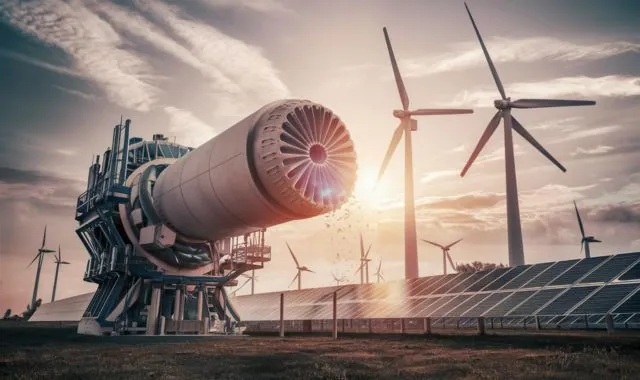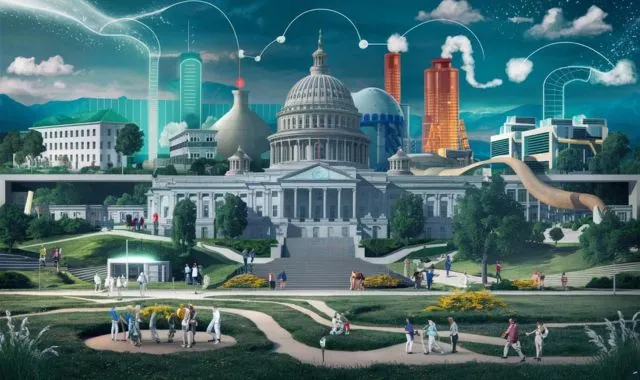Physical Address
304 North Cardinal St.
Dorchester Center, MA 02124
Physical Address
304 North Cardinal St.
Dorchester Center, MA 02124

This article explores carbon capture technology (CCT), a method for capturing CO2 emissions and storing them underground. It explains how CCT works, its benefits (reducing emissions, enabling cleaner fossil fuels), and challenges (cost, storage, perception). Looking ahead, government support, innovation, and collaboration are expected to play a key role in CCT’s future. However, CCT is most effective when combined with other sustainable solutions like renewables and energy efficiency.

Climate change is a pressing global issue, and reducing carbon dioxide (CO2) emissions is crucial. While transitioning to renewable energy sources is essential, existing infrastructure and industrial processes still rely heavily on fossil fuels. This is where carbon capture technology (CCT) emerges as a potential game-changer.
Carbon capture technology captures CO2 emissions from industrial sources like power plants, steel mills, and cement factories before they enter the atmosphere. This captured CO2 can then be transported and stored safely underground, preventing its contribution to global warming.
There are several compelling reasons why carbon capture is important:
Many industries rely on fossil fuels, and transitioning them entirely to renewables may take time. CCT can bridge this gap by capturing emissions from existing infrastructure, significantly reducing their overall carbon footprint.
While renewables are the ultimate goal, CCT can pave the way for cleaner fossil fuel use in the interim. Capturing emissions from power plants using fossil fuels can significantly reduce their environmental impact.
Some CCT methods, like direct air capture (DAC), can even remove existing CO2 from the atmosphere. This creates the potential for “negative emissions,” actively reversing the effects of climate change.
CCT involves three main stages:
Various technologies can capture CO2 from emissions, including chemical absorption, membrane separation, and physical scrubbing.
The captured CO2 is compressed and transported via pipelines, ships, or trucks to storage locations.
Captured CO2 is then injected deep underground into geological formations like depleted oil and gas reservoirs or saline aquifers.
Several CCT approaches cater to different emission sources:
This method captures CO2 before fuel is burned in power plants. It’s most effective for facilities with high-purity CO2 streams.
DAC technologies capture CO2 directly from the atmosphere. While still in development, DAC holds immense potential for removing existing CO2.
CCT offers a multitude of benefits in the fight against climate change:
CCT can significantly reduce emissions from industrial facilities that are difficult to decarbonize entirely.
By capturing emissions from fossil fuel power plants, CCT can bridge the gap until renewable energy dominates the grid.
DAC technologies have the potential to remove existing CO2 from the atmosphere, actively mitigating climate change.
Despite its potential, CCT faces some challenges:
Developing and implementing CCT is expensive, requiring significant investment and infrastructure development.
Ensuring the long-term, secure storage of captured CO2 underground is crucial to prevent leaks and negate the technology’s benefits.
Concerns exist around the safety and effectiveness of CCT, requiring ongoing research and public education to build trust.
The Future of Carbon Capture Technology: A Glimpse into a Cleaner Tomorrow
Carbon capture technology (CCT) holds immense promise for mitigating climate change, but its future hinges on overcoming current hurdles and fostering strategic advancements. Here’s a look at what lies ahead for CCT:
As the urgency of climate action intensifies, governments are likely to increase financial incentives for CCT research, development, and deployment. This will accelerate innovation and make CCT more accessible.
Continuous research is driving the development of more efficient and cost-effective CCT methods. This will make the technology more attractive to industries and broaden its application.
Collaboration between governments, industries, and research institutions is expected to continue accelerating. This will lead to faster innovation, improved storage solutions, and wider adoption of CCT.
While CCT is a powerful tool, it’s most effective when combined with other climate change solutions:
Transitioning to renewable energy sources like solar and wind remains crucial. CCT can bridge the gap by reducing emissions from existing fossil fuel infrastructure while renewables gain prominence.
Implementing energy-saving measures across industries and households can significantly reduce overall emissions, lessening the burden on CCT.
Forests and other natural ecosystems capture and store vast amounts of CO2. Protecting and restoring these sinks is essential for a holistic approach.
By strategically integrating CCT with other climate-friendly strategies, we can pave the way for a sustainable future. As the technology matures and costs decrease, it has the potential to become a vital weapon in our fight against climate change.
Carbon capture technology offers a beacon of hope in our fight for a cleaner planet. By addressing current challenges, fostering innovation, and integrating CCT with a broader sustainability strategy, we can capture a brighter future, one where clean air and a stable climate become a reality.
While challenges remain, there are promising developments propelling CCT forward:
Many governments are recognizing the potential of CCT and offering financial incentives for research, development, and deployment.
Continuous research is leading to more efficient and cost-effective CCT methods, making the technology more accessible.
Collaboration between governments, industries, and research institutions is accelerating innovation and deployment of CCT solutions.

CCT should not be seen as a silver bullet for climate change. It’s most effective when combined with a comprehensive approach that includes:
The primary focus should remain on transitioning to renewable energy sources like solar and wind power to reduce reliance on fossil fuels in the first place.
Implementing energy efficiency measures across industries and households can significantly reduce overall emissions.
Forests and other natural ecosystems play a crucial role in capturing and storing CO2. Protecting and restoring these natural carbon sinks is essential.

Carbon capture technology (CCT) stands at a crossroads. While its potential to mitigate climate change is undeniable, overcoming current hurdles and strategically integrating it with other solutions is crucial. Government support, continuous innovation, and collaborative efforts hold the key to unlocking CCT’s full potential. Remember, CCT is most effective when working alongside renewable energy, energy efficiency measures, and natural carbon sink protection. As costs decrease and the technology matures, CCT has the power to become a game-changer in the fight for a sustainable future. Let’s capture our future from thin air, not pollution, and create a cleaner, healthier planet for generations to come.
A: CCT captures CO2 emissions from sources like power plants before they enter the atmosphere. This captured CO2 can then be stored underground, preventing its contribution to climate change.
A: CCT offers several benefits: reducing emissions from existing industries, enabling cleaner fossil fuel use in the interim, and even potentially removing existing CO2 from the atmosphere.
A: Cost concerns, storage security, and public perception are the key challenges CCT faces.
A: Government support, technological advancements, and collaboration are expected to drive down costs, improve storage solutions, and increase CCT adoption.
A: CCT is most effective when combined with other solutions like prioritizing renewable energy, improving energy efficiency, and protecting natural carbon sinks.
A: No. CCT is a valuable tool, but it should be part of a comprehensive approach that addresses emissions at the source and promotes long-term sustainability.